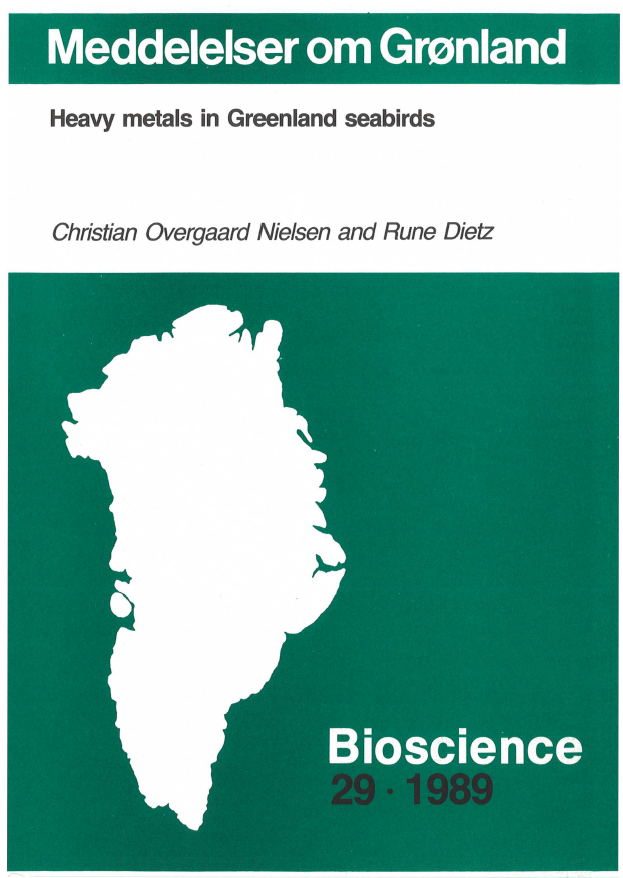Heavy metals in Greenland seabirds
DOI:
https://doi.org/10.7146/mogbiosci.v29.142376Abstract
From six Greenland districts we report the concentration of Zn, Cd, Hg and Se in muscle (pectoral), liver and kidney for 320 seabirds of the following species: Cepphus grylle, Uria lomvia, Clangula hyemalis, Mergus serrator, Larus glaucoides, L. hyperboreus, Rissa tridactyla, Pagophila eburnea, Fulmarus glacialis, Phalacrocorax carbo and Stercorarius pomarinus.
Concentrations vary widely within species. Yearlings are low in Cd and Hg. Concentrations tend to increase with age. No significant differences between sexes were found.
On a wet weight basis, the Zn concentration in liver and kidney is c. three times that of muscle. Gulls and the fulmar possess significantly more Zn in muscle than do other seabirds. The Cd concentration in liver and kidney is c. 20 and 80 times higher than in muscle, whereas the Hg concentration in liver and kidney is three to five times higher than that of muscle. The Se concentration in liver and kidney is c. five times the muscle concentration. Muscle, liver and kidney concentrations tend to correlate positively for Cd, Hg and Se. For Zn only liver and kidney concentrations correlate mutually.
On a molar basis, the three organs of all species have a large excess of Se over Hg. The intra-organ association of elements is strongest for Zn and Cd in liver and kidney, and for Hg and Se generally. All four elements show consistently higher concentrations in birds from NW and
NE Greenland than in those from S Greenland. For C. grylle from Avanersuaq, NW Greenland, the Cd concentration is twice that of birds from S Greenland, the difference being highly significant. Hg concentrations are not significantly different.

Downloads
Published
Issue
Section
License
Coypyright by the authors and the Commision for Scientific Research in Greenland / Danish Polar Center/Museum Tusculanum Press as indicated in the individual volumes. No parts of the publications may be reproduced in any form without the written permission by the copyright owners.

